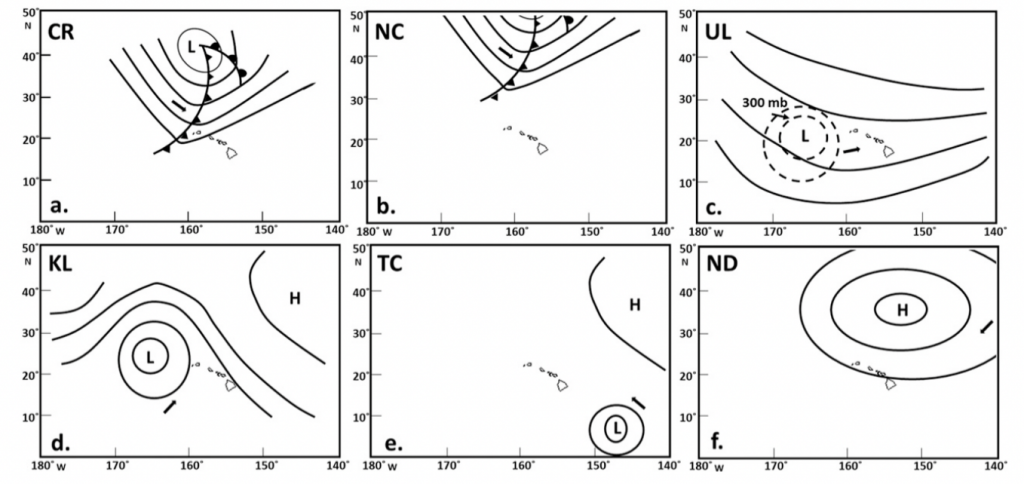Contributed by Ryan Longman: rlongman@hawaii.edu
This research explores the relationship between 4-types of atmospheric disturbances and their contributions to daily rainfall on O‘ahu Hawai‘i. On average, atmospheric disturbances account for 29% of the annual and 41% of the seasonal (Nov – April) rainfall on O‘ahu Hawai‘i. Cold, fronts are the most common disturbance type, and fronts that cross over the island are shown to bring significantly more rainfall than the fronts that track to the north of the Island chain. Understanding the relative contributions of disturbances to wet-season RF as well as the spatial distribution of RF during these events is important in the context of a changing climate in which disturbances are expected to become less frequent and more intense. This work has been published in the American Meteorological Society Journal, “Monthly Weather Review”. Publication Link

Schematics showing six types of synoptic patterns that produce rainfall in Hawai‘i: (a) crossing fronts (CR), (b) noncrossing
fronts (NC), (c) upper-level low pressure systems (UL), (d) kona low storms (KL), (e) tropical cyclones (TC), and (f) nondisturbances
(ND). The 500-hPa isobars are indicated with solid black lines and the wind direction is indicated by the arrow.

Frequency of occurrence for each disturbance type from 1 Oct 1990 to 31 Sep 2010.

Percentage of rainfall that has occurred for each disturbance category over (left) the 20 water years and
(right) wet seasons that have occurred between 1990 and 2010.

